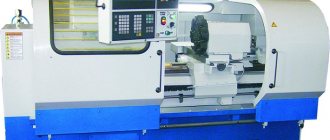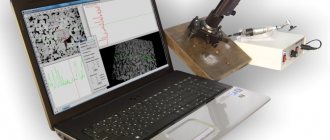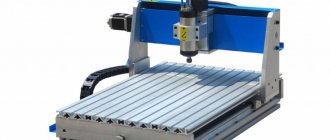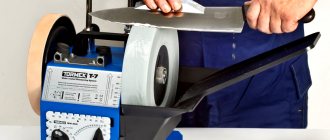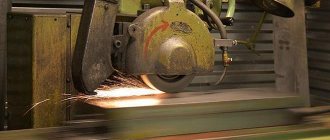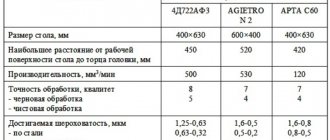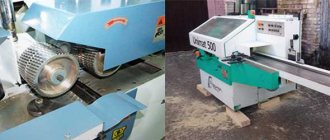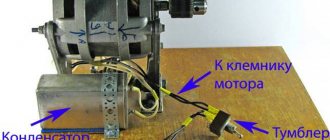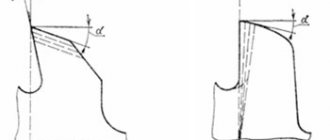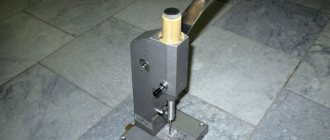It is possible to obtain a finished element with a complex design from the simplest metal workpiece using one unit - a metal turning and milling machine. Such machines represent a full-fledged production complex on which several types of metalworking can be performed at once. A metal turning and milling machine is a necessary tool in production of various specifications. To choose the optimal modification unit, you need to carefully study the offers that are available on the machine tool market.
Types of machines
Metal turning and milling machines have several classification principles. Experts in the metallurgical industry typically divide such machines according to the following principles and into the following categories:
Massiveness of the machine:
- Tabletop turning and milling devices. The weight of such machines does not exceed 400 kg. To operate them, a special industrial table is required.
- Small machines whose weight does not exceed 1 ton.
- Medium sized units. Their weight is more than 1 ton, but does not exceed 10 tons.
- Large industrial machines. These units weigh more than 10 tons.
Control type:
- Manually operated devices.
- Semi-automatic systems.
- Machine tools with numerical control (CNC machines).
Specification:
- Single-variant machines.
- Multifunctional, customizable systems.
Milling support type:
- With classic caliper.
- With counter spindle.
- Drive devices.
- With support for spindle with C-axis.
Metal workpiece material:
- Mono metal.
- High strength metal alloy.
- High carbon steel.
- Alloy steel.
The machine tool market has developed a clear relationship between the functional complexity of a machine and its price. The richer the set of functions of the unit, the higher the price of a metal turning and milling machine.
Equipment design
A metal turning and milling machine combines the basic functions of turning and milling devices. These functions are due to the integration of certain units (lathe and milling) onto a single base.
The main turning units of the combined machine:
- bed;
- rear beam;
- spindle;
- caliper;
- screw for creating threads.
The main milling units of the combined machine:
- cutter motor (located on the turning support);
- cone for attaching taps, cutters, or drills;
- type cutters or cutters with inserts made of hard alloys;
- additional support, which allows you to integrate additional taps, drills, face or end mills, reamers, and disk cutters into the unit.
The unique design principle of such multifunctional units turned separate lathe and milling machines into a full-fledged production machine.
Specifications
The name “metal turning and milling machine” speaks about its specification: this equipment is designed to simultaneously perform both turning and milling operations on the same part made of mono-metal or a metal alloy. The turning part of the equipment is usually used for turning and grinding cylindrical parts. Milling mechanisms allow you to make grooves (straight or shaped) and drill other holes.
Generalized analytics on turning and milling machines for metal indicate the commonality of the following technical characteristics of units of this type:
- The height of the centers of the workpieces. This indicator determines the diameter of the part that is possible when processed on this machine. Most often it is from 100 to 380 millimeters.
- Width of the processing area. The maximum length of a metal workpiece suitable for turning on a particular device is directly dependent on this indicator. The most common maximum distance between the centers of elements: from 250 to 750 millimeters.
- Depth of part turning. This indicator indicates how thick a layer can be cut in one revolution of the shaft structure. As a rule, this figure does not exceed 0.3 millimeters.
- Number of processing speeds. Depending on the material from which the metal workpiece is made, you can select the required number of rotations per unit of time—the processing speed. Modern machines, as a rule, have up to 10 speed options.
- Dimensional characteristics of the cutter shank (diameter). The dimensions of the cuts and holes in the final product are determined by the diameter of the cutter shank. This figure most often does not exceed 30 millimeters. If you need to make several identical parts (identical grooves, slots), it makes sense to use a metal turning and milling machine with a copier option.
Specific technical characteristics depend on the specific model of metal lathe with milling function.
Varieties
Both types of machines have several varieties depending on the location of the part, the complexity of processing, power and capabilities. Modern machines allow you to create parts of different configurations from blanks and process the largest possible parts.
Milling machines
Using a milling unit, it is possible to produce parts with complex configurations, for example, a gear. There are a total of 7 types of milling machines:
- Universal with rotating faceplate. In this type of machine, the spindle is fixed horizontally, the part is processed along 3 axes using a rotary table. This machine is good for making corners, cutting spirals, and grooves.
- Horizontal milling. In this machine the spindle is located horizontally. The mechanism allows you to process small blanks using various types of cutters. When installing spare structures, it becomes possible to carry out vertical processing.
- Vertical console-milling. This is a type of model in which the spindle is located vertically, but has the ability to rotate in a horizontal plane. Such equipment resembles a large drilling unit.
- Widely versatile machines are equipped with a standard spindle for horizontal processing, but there is also an additional spindle head located on a movable trunk. With the help of such equipment, it is possible to carry out milling at various angles and in a pair of planes. The master has the ability to use two spindles simultaneously or sequentially.
- Vertical and horizontal milling, non-cantilever. On machines that do not have a console, large parts can be easily processed. They are installed on a concrete slab or directly on the floor.
- Longitudinal milling. This equipment is used for processing long and large workpieces. The milling heads with a horizontal spindle are directly mounted on 1–2 racks. The machine is also equipped with a vertical version of the spindle, which is located on a perpendicular stand, on a traverse.
- Continuous milling machines. With such equipment it is possible to install and move a part without stopping the machine itself. This variety also comes in two types: rotary-milling, which are equipped with a round rotary table, and drum-milling, where the workpiece is mounted in a rotating drum.
Lathes
Lathes are used not only in large industries, but also in private workshops, as well as at home. Milling machines can often be found exclusively in production. Lathes also have 7 varieties:
- Screw-cutting. This is the most versatile type of turning equipment, which is suitable for all types of turning work, including polishing, grinding, boring.
- Carousel. This type of machine is designed for processing workpieces weighing several tons. The main element of such equipment is a rotating faceplate. This is the work table on which the workpiece is mounted. Two supports are designed for operation, which provide horizontal and vertical movement.
- Lobotovarnye. The unit is designed for the production and processing of cylindrical and conical parts of large diameter. Some blanks may exceed the diameter of a train wheel. The faceplate in such a machine is located vertically, and the support with the cutter are generally separated from the main structure.
- Revolving. The workpiece can be fixed vertically or horizontally. The support is equipped with a turret drum containing all the necessary tools. This allows you to apply several types of processing to a workpiece in one workflow. Machines with a horizontal axis of rotation of the turret drum are considered to be the most convenient, since with such a design it is possible to attach more tools to it.
- Automatic longitudinal turning machines. Such units are used for the manufacture of small parts from rod or wire. Depending on the model, the machine may have a movable or fixed spindle. To work with small-sized products, special collets are used.
- Multi-spindle machines. Large and complex equipment, which is used for large-scale production with serial production of precision and large parts. The unit operates several spindles simultaneously, which allows machines with such functions to perform several operations simultaneously.
- Turning and milling center. This unit is necessary for working with complex mechanisms and simultaneously performs the functions of a lathe and a milling cutter. It is possible to place a turning cutter in the milling head, and all actions occur automatically according to a numerical program entered into the computer.
When choosing equipment for certain technological processes, you should evaluate not only what type of processing needs to be done, but also the weight, size of the workpiece and the angle at which the processing should be carried out. The largest turning unit in history could process workpieces weighing up to 300 tons.
How to choose a metal turning and milling machine?
Before purchasing a metal turning and milling machine, you need to determine exactly what work you plan to perform on it. You need to understand what product, in what form, will need to be received at the output. Conclusion: the choice of a multifunctional machine directly depends on the specification and scale of production.
To perform a number of jobs at a small car repair station, for example, a table-top unit is sufficient. With its help, you can bring brake discs into working condition, grind a car crankshaft, or produce some part of a non-standard size or shape. Buying a complex, large CNC machine for a small auto repair shop is simply not profitable. After all, such a machine will not continuously produce identical parts in batches. And it may turn out that in a small workshop it is simply not possible to connect a large professional machine without special adapters - powerful units operate on 380 Volts, and not on 20 Volts.
If a metal turning and milling machine is needed for a medium or large industrial enterprise, then a system with numerical control will be the optimal (or even necessary) choice. After all, production involves the production of similar parts in whole batches.
You also need to focus on what metals and alloys will be processed and what human forces will be involved in the production process. High-tech machines must be operated by professional operators of a certain category.
Metal lathes
Lathes are the most common equipment used in machine shops of machine-building plants, enterprises of other industries, as well as in repair areas and workshops of various profiles.
Metal lathes are presented on our website in a wide range, which will allow you to choose and buy the equipment that is most optimal in price and functionally suitable for solving new problems posed in your production, or for replacing equipment, the operation of which in your enterprise becomes impractical due to moral or physical wear and tear.
Capabilities of turning equipment
Using lathes, surfaces are turned, ends are trimmed, threads and knurls are made, and holes are drilled. Lathes equipped with additional devices are also used for milling, drilling, grinding and cutting teeth. Metal lathes can process parts made of materials of varying hardness - steel, alloyed and ordinary, cast iron, non-ferrous metals and their alloys, plastics and wood.
Types and purpose of lathes
One of the important components of a lathe is the spindle - a supporting device that installs the workpiece of the part that needs to be processed. The spindle provides the main movement of the machine - the rotation of the workpiece, and the cutter acts as a cutting tool, the movement of which, longitudinal or transverse, is determined by another important mechanism - the caliper.
Depending on how the spindle is positioned, horizontal and vertical lathes are distinguished. Horizontal machines include screw-cutting lathes, turret lathes, pipe-cutting lathes, tabletop lathes and similar ones. The vertical type includes rotary lathes. They are used primarily for working with large workpieces (with large diameter and weight). Lathes vary in purpose, assembly, and mechanization. There are screw-cutting lathes, table-top lathes and CNC lathes.
Screw-cutting lathes
Screw-cutting lathes are the most popular equipment, belonging to the universal type and allowing to perform a wide range of technological operations associated with the mechanical processing of workpieces - turning of cylindrical and conical surfaces, external and internal, boring, axial drilling, reaming, countersinking, as well as cutting various threads with cutters and taps. They are used primarily for processing a small number of parts in a batch.
CNC lathes
CNC lathes are used in large-scale production. These machines have a high degree of automation; the operation of the machine is monitored visually by the operator. The machines of this group produce high-quality products. The person responsible for production takes part in the preparatory stage and at the final stage: he only needs to install and remove the part, set up the equipment. CNC lathes offer production flexibility, which is another advantage of these machines. This means that to process parts that differ in size and materials from which they are made, you simply need to change the program. Such machines can perform precise processing of parts, producing identical products.
Turning and milling machines
Turning and milling machines, usually called machining centers, carry out milling and drilling of parts. The processing center makes parts consisting of several parts, i.e. those that require turning and milling, such as a crankshaft.
Favorable prices for lathes
Lathes have great technological capabilities. This is a necessary tool for processing various metal and wooden parts. At the Stanochny Mir company you can buy new metal lathes from domestic and foreign manufacturers at competitive prices. Our sales team will be able to select the most suitable option for you.
Advantages of turning and milling machines
Multifunctional turning and milling machines have become integral parts of many large production lines or have become staple tools in small repair shops. Craftsmen who deal with such machines every day as part of their job responsibilities, business owners and third-party independent experts in the machine tool industry name the following advantages of turning and milling machines:
- Each model is distinguished by a design thought out to the smallest detail. This allows you to minimize the overall dimensions and weight of the unit, which, in turn, allows you to optimally use the production space of a workshop or, for example, a workshop.
- High accuracy of the finished product relative to the technical specifications. The less movement between processing devices, the higher the level of automation of the production process, the better the quality of the final product.
- Modern machines are characterized by a high level of rigidity. This minimizes vibrations that may occur during production. Consequently, the risk of damage to parts is reduced.
- High-quality machines are famous for their long service life. This is largely possible thanks to the thoughtful design, durable gears and repairability.
- The guides are usually subjected to a scraping procedure. This increases the level of precision in processing the metal workpiece.
- Options such as an emergency shutdown button or a protective shield increase the level of safety when working with a metal lathe.
- Many models are equipped with a telescopic chip guard (metal) for the lead screw.
- Milling heads are usually secured with a special integrated lock. This again has a positive effect on the safety of work and on the quality of the final product.
- Many machines have the ability to process both long and short cone-shaped elements.
Depending on the specific model of the device, other advantages of introducing turning and milling machines into production may be noted.
Turning and milling machines from TAPKO-M LLC
The company's goal is to maximally satisfy the needs of all categories of potential buyers. Therefore, when selecting models of turning and milling equipment for implementation, the company takes into account the real production needs of its customers, also taking into account market requirements. By setting reasonable prices for machines, the company at the same time provides individual discounts, and, in addition, sells products at promotional prices and for leasing.
